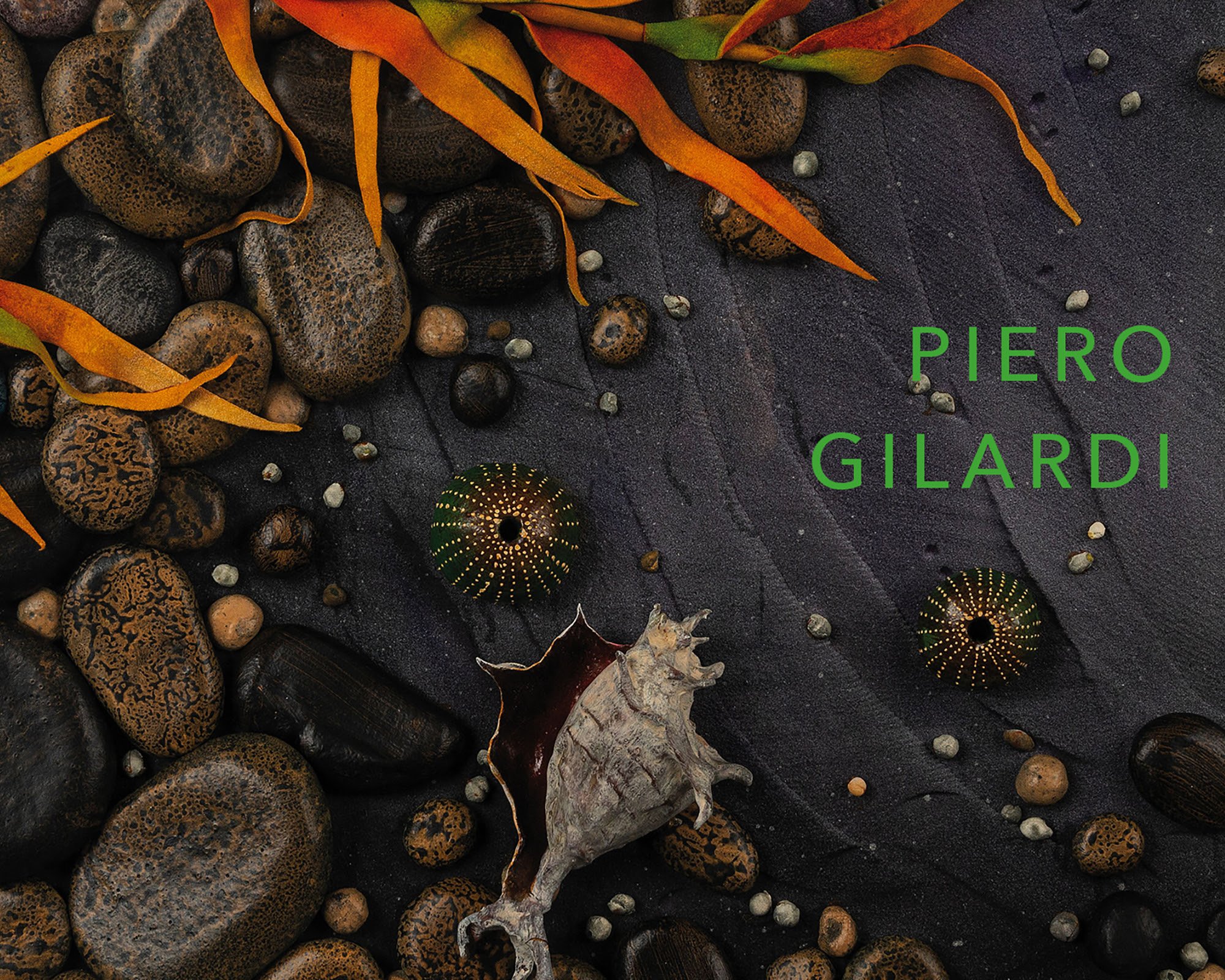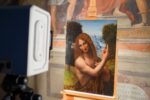Piero Gilardi

La mostra presenta una selezione di opere in poliuretano di Piero Gilardi (Torino, 1942) dagli anni Settanta agli anni Novanta.
Comunicato stampa
La mostra presenta una selezione di opere in poliuretano di Piero Gilardi (Torino, 1942) dagli anni Settanta agli anni Novanta. Se è vero che la natura ha da sempre esercitato sull’uomo fascinazione e ispirazione, dalle grotte di Lascaux fino agli artisti contemporanei, la proposta di Piero Gilardi ristabilisce, e in certo qual modo rifonda, il vincolo di comunanza e di vicissitudine che abbraccia uomo e natura, fino a trovare una sintesi personale tra l’evoluzionismo di Darwin e la teoria dei New Media e dell’Artificial Life.
Il lavoro dei Tappeti-natura, iniziato alla metà degli anni Sessanta, evidenzia, anche nei suoi più recenti sviluppi, l’interconnettività che lega l’uomo al mondo, oltre alla capacità di co-evoluzione nel tempo di tale relazione. Questo profondo legame è apparso in tutta la sua strutturale evidenza in seguito allo sviluppo nella seconda metà del secolo scorso della cibernetica e della teoria dei sistemi e ritorna nell’opera di Gilardi nel suo approccio multisensoriale di apertura e confronto, nelle sue recenti installazioni interattive e multimediali e, a partire dal 1985, nell’elaborazione del progetto Ixiana, che prende forma nel grande Parco d’Arte Vivente di Torino.
Molti i quesiti messi in campo dal lavoro di Piero Gilardi. Che cosa è veramente natura e che cosa è l’opera d’arte? Come sta cambiando non solo la definizione di natura e di naturale, ma quella complessiva dell’uomo e dell’umano, anche alla luce delle tecnologie dell’A.I.? Quali sono quindi le differenze che separano il vegetale, l’umano, l’animale e il minerale? A questi interrogativi fa seguito la considerazione del ruolo della tecnica nel nostro tempo, l’antropizzazione del mondo e la fine dell’antropocentrismo tra il divenire-macchina e il divenire-terra.
Gilardi ha presentito, fin dagli anni Sessanta, come sotto la pressione di una tecnologia sempre più invasiva, i confini tra uomo e natura, tra oggetto e corpo organico, andassero via via trasformandosi e sovrapponendosi, aprendo a nuove forme di coesistenza e di soggettività, talvolta paradossali ma non necessariamente distopiche.
I frammenti di natura poliuretanica non rappresentano e non alludono, ma divengono vettori sensoriali, anche attraverso la paradossalità delle loro relazioni con la realtà naturale, che sollecitano il cervello dell’osservatore a fornire nuove risposte in corrispondenza di inediti stimoli. In questo modo le sorprese e i misteri della natura, attraverso la supposta artificiosità dell’arte, divengono sonde gettate nella reattività dell’umano, nella sua capacità di produrre nuovi orizzonti di senso, o di non senso, a seconda dei casi. Il gap tra familiare e perturbante che si prova di fronte ai Tappeti-natura, crea quindi la distanza, l’ostruzione, la “discrepanza”, secondo un termine usato dall’artista, che permette all’osservatore di ricreare la natura scardinando i codici acquisiti. In questo caso quindi la natura non è soltanto quella congelata nel frammento di poliuretano a cui quell’immagine particolare rimanda, ma è anche quella dei collegamenti neuronali messi in gioco dall’interazione tra l’artista e il fruitore dell’opera, e della capacità che ne deriva di estendere il concetto di vita anche all’artificiale, oltre le barriere della distinzione tra organico ed inorganico.
PIERO GILARDI
Opening: 15 September 2022, 5 pm > 8 pm
15.05 - 28.10.2022
from Monday to Friday, 10.30 am - 6 pm
MAAB Gallery, via Nerino 3, 20123 Milan
The exhibition presents a selection of polyurethane works by Piero Gilardi (Turin, 1942) from the 1970s to the 1990s. If it is true that nature has always fascinated and inspired people, from the caves of Lascaux to the work of contemporary artists, Piero Gilardi's works re-establish, and in a certain sense recreate, the bond of fellowship and affinity that embraces man and nature, to the point of finding a personal synthesis between Darwin's evolutionism and the theory of New Media and Artificial Life.
The work of the Tappeti-natura (Nature mats), which began in the mid-1960s, highlights, even in its most recent developments, the interconnectivity that binds man to the world, as well as the potential for co-evolution of this relationship over time. This profound connection appeared in full structural evidence following the development of cybernetics and systems theory in the second half of the last century, and it returns in Gilardi's work in his multisensory approach of openness and confrontation, in his recent interactive and multimedia installations and, from 1985 onwards, in the elaboration of the Ixiana project, which took shape in the large Parco d’Arte Vivente in Turin. Many questions are raised by Piero Gilardi's work. What is truly nature and what is the work of art? How is the definition of nature and the natural changing, along with the overall definition of man and human, also in the light of A.I. technology? What are the differences that distinguish the vegetable, the human, the animal and the mineral? These questions are followed by a consideration of the role of technology in our time, the anthropisation of the world and the end of anthropocentrism between the becoming-machine and the becoming-earth.
Gilardi foresaw, as early as the 1960s, how under the pressure of increasingly invasive technology, the boundaries between man and nature, between object and organic body, were gradually transforming and overlapping, opening up new forms of coexistence and subjectivity, which were sometimes paradoxical but not necessarily dystopian.
The polyurethane fragments do not represent or suggest, but become sensory vectors, not least through the paradoxicality of their relationship with natural reality, which prompt the observer's brain to provide new responses to new stimuli. In this way, the surprises and mysteries of nature, through the supposed artificiality of art, become probes thrown into the reactivity of the human, into their capacity to produce new horizons of sense, or non-sense, as the case may be. The gap between the familiar and the perturbing that one feels in front of the Tappeti-natura, therefore, creates the distance, the obstruction, the 'discrepancy', according to a term used by the artist, that allows the observer to recreate nature by breaking down the acquired codes. In this case, therefore, nature is not only frozen in the fragment of polyurethane to which that particular image refers, but is also that of the neural connections brought into play by the interaction between the artist and the viewer of the work, and the resulting ability to extend the concept of life to the artificial, beyond the barriers of the distinction between organic and inorganic.



